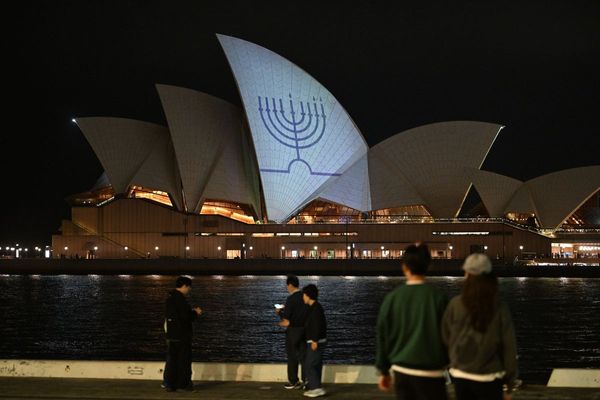
It was an autumn day in 1999. I was an undergraduate student among a thin audience at the auditorium of Delhi University’s Hindu College. That was the first time I saw Dr Manmohan Singh in person. And that was when I noticed core attributes he carried even in high office – unassuming, methodical, and no-fuss-approached.
Singh was the chief guest at a panel discussion on the methods to study the Indian economy. But his presence hadn’t evoked much interest – the former finance minister had lost the Lok Sabha polls from South Delhi in the summer that year. The empty venue didn’t bother him. Singh listened to four eminent Indian economists, including professor Abhijit Sen, took notes, and delivered a concluding speech.
At the same event, Sen quipped that he hoped that Singh would consider some of the conclusions from the discussion for policymaking when he heads the finance ministry. It was a rhetorical remark. Many thought there was no chance for Singh to be in the North Block again. But just five years later, Singh emerged as the consensus choice for the prime minister’s position, and went on to head the Congress-led UPA coalition government at the centre for 10 years – the longest serving PM after Jawaharlal Nehru, Indira Gandhi and Narendra Modi; the first non-Gandhi-Nehru PM to have a second consecutive term; and India’s first Sikh prime minister.
It was highly unlikely to foresee Singh’s political rise. But probably his non-threatening persona earned him the nod of the Congress top brass. As a political creature of the party leadership’s necessity, he was often seen, in journalist and his former media advisor Sanjay Baru’s evocative phrase and eponymous book, as “the accidental prime minister”.
Academic years to North Block circles
That afternoon, not far from the auditorium he was speaking at, stood the Delhi School of Economics, an institution where he taught international trade from late 1960s to early seventies, after earlier teaching at Punjab University. For a boy born in Gah, in the undivided Punjab of pre-Partition India, in 1932, Singh’s devotion to academics was his way to the wider world. And later he forayed into the higher research areas in the discipline of economics in global seats of learning – first in Cambridge University, and later a D Phil from Oxford University.
Mentored by economists like Joan Robinson and Nicholas Kaldor in the early years, Singh found his own register of economic perspectives. After stints in the UN and later in the Indian government’s foreign trade ministry in the sixties, he returned to academics in the later part of the decade as a professor in the DSE. His daughter Upinder Singh, who taught history at Delhi University, once recalled how Singh recollected going to the DU’s North Campus by bus when the metro link for the university was made operational early this century. He also empathised with her, she recalled, when she sat with a heap of answer scripts to mark. Probably reminding him of his work decades earlier.
It was this phase from which he made a shift to the policymaking circles of North Block – his appointment as the chief economic advisor in the finance ministry in 1972 was followed by him getting the finance secretary position in 1976, and in the next decade, he went on to become the RBI governor in 1982. In many ways, his shift from academics to the apex of financial bureaucracy in the country gave him an insider’s view of policy making and financial administration. The discipline of an empirical economist of international trade was blended with hands-on macroeconomic management. This certainly prepared the ground for the toughest challenge he had in the finance ministry, in a role that unexpectedly came to him in early 1990s as India was battling a financial crisis and balance of payment troubles.
Singh could be decisive when he chose to be so, and certainly he had the support of PM Narasimha Rao when India embarked on the economic liberalisation policy in 1991.
He aimed at a paradigm shift
Singh’s historic budget aimed at a paradigm shift in India’s industrial policy, opening up of the economy, and dismantling the licence-permit raj. He reckoned that this break from the past was what the economy needed not only for averting the crisis but also for growth and realising its productive potential. “No power on earth can stop an idea whose time has come,” Singh quoted Victor Hugo’s words while pitching in the inevitable need for the shift in India’s economic philosophy. It’s a different matter altogether that he would have wanted a faster pace of reforms, and a far more focused second generation reforms too, but the fact remains that he set it in motion.
In hindsight, his two terms as PM were often viewed through the prism of dual power centres – many believing that power de facto lay in the hands of Sonia Gandhi-led National Advisory Council while the de jure one was the PMO. To add to that, the nature of the coalition government also meant that the pressures and pulls of regional allies – including that of Left parties in UPA-I – did undermine his independent functioning. Many critics saw these compulsions as forcing him to be a part of the weakening of prime ministerial authority. To an extent, these limitations came in the wake of the coalition era that was at the core of national politics for the last few decades.
It was, however, his own standing within the party vis-a-vis the Gandhi family controlled-top brass, and his lack of popular footing, that provided canon fodder to his critics. The fact that the Congress leadership was seen as running a parallel government, and not merely decoupling the party from the government, didn’t help public perceptions either.
The politician with a workman approach to communication
This view had episodic challenges too. One instance where he invested a lot of political energy in a decision, and stood his ground despite opposition from allies and a section of party, was the Indo-US nuclear deal. He dug his heels deep into seeing that the deal was signed, even ready to risk the fall of the government. The fact that he put his foot down on what was essentially a question of a foreign policy reset, and aimed at ending what was seen as nuclear apartheid, was clearly a moment of the assertion of his political agency.
For a man known for probity in public life, as simplistic, and as a middle class icon for his meritocratic rise, Singh also bore the brunt of a slew of corruption charges that rocked his government, especially the second term. The opposition, while conceding his incorruptible credentials, did target him for letting some of his ministers be involved in a number of “scams-”. The political ferment of an anti-graft movement in 2011 also cast a long shadow over the ethical conduct of the government. All this happened while his party wasn’t seen as keen on stemming the rot, as remaining afloat in the power equations at the centre. With limited or no political weight of his own, he had little political choice but to look the other way.
A man of few necessary words, and with a liking for bureaucratic economy of words and placid poise, Singh had a more workman kind of approach to public communication. This was sometimes held against him, often made into stuff for public mockery and to lampoon him as the “silent PM”. The opposition parties weaponised this.
But in Parliament and at press conferences, the statistics told a different story.
His parliamentary engagements were regular, so was his availability for other platforms. The criticism about what was seen as “reticence” had more to do with his limited role as a politician, and the lack of what politician-PMs usually bring to the South Block as well as public rallies.
At the same time, his tenure coincided with the advent of social media as a tool of public communication in India. It would be anachronistic to say that he missed tapping its potential – the medium wasn’t for someone more steeped in the bureaucratic discipline of a measured tone.
“This is a type of man who has no recourse to the useful deceits of articulation. And, constricted by decency, he lacks the means of sly backdoor channels to deliver news favourable to him,” wrote novelist and journalist Manu Joseph in The New York Times about Singh in January 2014. Probably Singh knew that only the chronicles of the time, written with historical distance and in cold light, could compensate for his own aversion to advertise himself.
That probably explains why he hoped for a better judgment about him from history. As someone who had his moorings as a detached economist-bureaucrat, Singh also had a less explored side – especially his political skill in navigating adverse conditions to survive the PMO for 10 years.
No wonder that when Singh was heading the government, political commentator Pratap Bhanu Mehta had described him as the most successful politician of his time. It’s that side of him which seems lost in the cloying tale of a wronged man willing to offer his spine. In whatever way we look at it, Singh’s imprint on crucial years of India’s economy and polity is more seminal than he would have ever let us know. In that sense, his measured presence was mistaken for invisibility, as he probably chose not to crowd the “look-at-me’’ political class.
Small teams can do great things. All it takes is a subscription. Subscribe now and power Newslaundry’s work.
Newslaundry is a reader-supported, ad-free, independent news outlet based out of New Delhi. Support their journalism, here.







